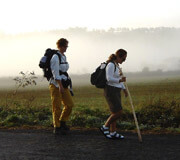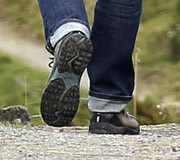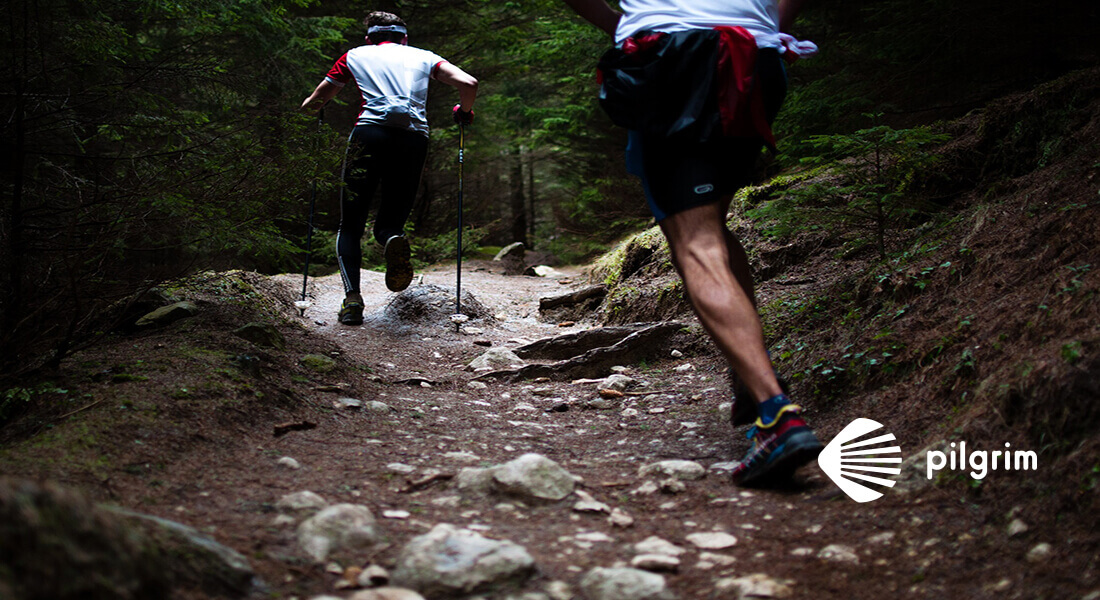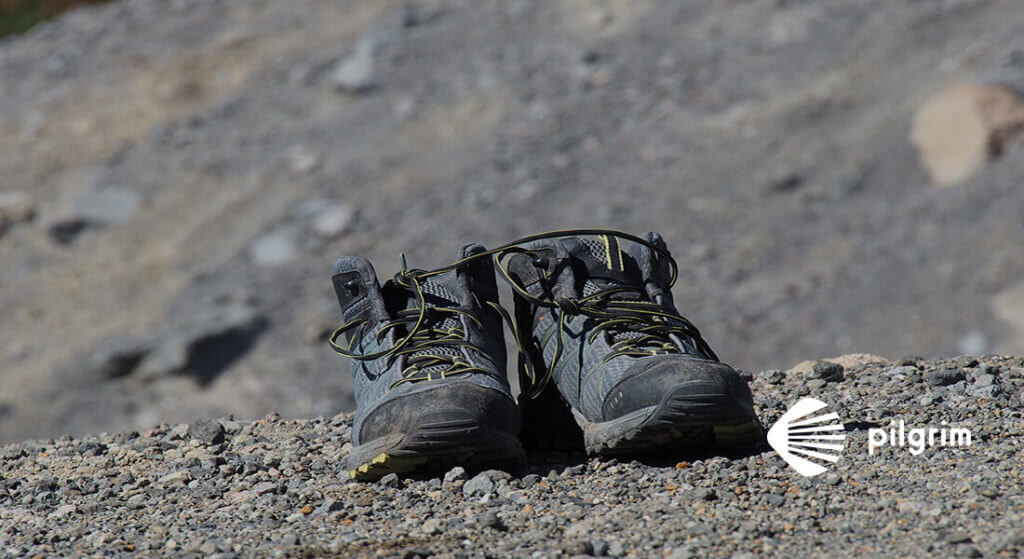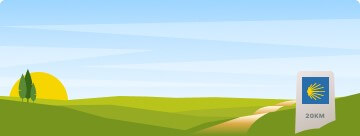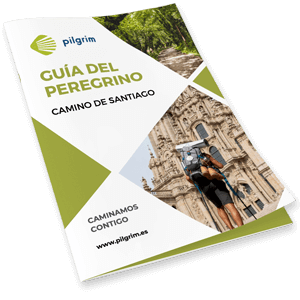On many occasions, one of the doubts that assault first-time pilgrims is whether they will be able to withstand with guarantees this great challenge of pilgrimage and if they need some physical preparation for the Camino de Santiago.
Numerous questions arise in this regard, and the answer to all of them could not be other than the stereotypical one of the Galician community: it depends!
YOU CAN ALSO BE INTERESTED: HOW TO TAKE CARE OF YOUR FEET ON THE CAMINO DE SANTIAGO
Questions such as:
“Do I need to exercise before starting the Camino?”, “Should I go to the physiotherapist or go to a professional for recommendations?” or “How far in advance do I prepare?”
These have crossed the minds of many pilgrims.
With this post we will try to establish a series of general recommendations with which to prepare beforehand and that will make your pilgrimage to Santiago de Compostela a much more pleasant and satisfactory experience, thus avoiding poor planning.
EXPERIENCES OF VETERAN PILGRIMS
As you have surely heard, there are cases and cases of pilgrims who embark on this adventure for different motivations, starting from totally different places and with totally different routes.
Therefore, physical preparation is different for a person who does sport every day and goes to the gym frequently, than for someone with a more sedentary lifestyle who does not have the time to exercise regularly.
However, there are many experts and sports professionals who have spoken out on this issue, all of them coming to the conclusion that, with few exceptions, all pilgrims must carry out prior physical preparation.
All this is due to the unique characteristics of the Camino, which have nothing to do with those necessary for the practice of any other sport and which will involve a series of efforts to which a person, athlete or not, is not going to be accustomed.
Walking about 30 kilometres day after day with a backpack weighing about 10 kilos is a great challenge, both physically and mentally, and must therefore be prepared thoroughly.
BASIC TIPS FOR YOUR TRAINING PLAN
First of all, it is recommended to start the physical preparation a couple of months beforehand, during which short walks should be carried out so as to start with a frequency of around 2-3 walks per week.
We will progressively increase these walks until the last week with daily walks and distances equal to the average of your stages, always trying to use the footwear chosen for the Camino, with the aim that you get used to it little by little and do not appear the feared blisters at the least indicated moment.
It will also be very helpful to accompany these walks with complementary gym sessions, so that you tone your body and your muscles gain elasticity, avoiding muscular or joint problems in the future.
As the starting date of the pilgrimage approaches, it is advisable to make the walks accompanied by the backpack and with a weight similar to what you will carry in the stages, adapting to the conditions in which you do the Camino as quickly and comfortably as possible, making the muscles of the knees and ankles are strengthened and do not give unwanted discomfort.
In addition, as far as possible, some of these hikes should be done through a nearby mountain, so that you can get used to the many ups and downs that you will encounter, especially in the final stretch, once you enter Galicia.
IF YOU DO THE CAMINO DE SANTIAGO BY BICYCLE
In case you decide to undertake your Camino a Santiago by bike,with the exception of changing the backpack for a pair of panniers, the recommendations are along the same lines, with two months of prior preparation for those who do not have much habit, starting with flat stretches and gradually adding climbs in which you will become familiar with the combinations of chainring and sprockets suitable for each ground profile.
In the last few days you will also have to train with your saddlebags loaded.
For those who have not had the opportunity to do this training before, whether you do the Camino on foot or by bike, the ideal is to start the first stages very gently, increasing the distances gradually to avoid stiffness or muscle contractures.
PREPARE YOUR EQUIPMENT
In previous paragraphs we have introduced two elements that are key to preparing for this adventure: what shoes to wear and what to carry in my backpack.
These are usually two factors that many pilgrims on their first walk overlook, making this a terrible decision that hinders the journey and whose prior planning is essential. For this we leave you a series of tips to keep in mind:
FOOTWEAR
- Trekking or hiking boots (in summer also trainers)
- Fitting well to the foot
- Lightweight, waterproof fabric
- To protect the ankles
- Cotton and seamless socks
- Flip-flops or sandals: To air the foot at the end of the stage.
- BOOTS ALREADY WORN (New footwear on the Camino = blisters guaranteed).
BACKPACK
- Comfortable, adaptable and lightweight
- With straps to aid fastening
- Exterior and interior, side and top pockets
- Never more than 10 kilos (if you carry more, there is something in excess)
- Place items in a functional way: with the heaviest items at the bottom to bring their weight closer to the centre of gravity and items that you use frequently in the outer pockets (water bottle, sun cream, etc.).
- First aid kit: with sun protection, anti-friction gel for boots, antiseptic, ammonia for insect bites, plasters, 1 elastic bandage and a pocket knife.
LAST NOTES
In addition to these basic tips, there are a number of walking techniques that we will try to summarise below in order to make the stages as bearable as possible:
ON LEVEL GROUND
Walk at your normal pace, not too long and not too short If someone in your group has a slower or faster pace, that’s fine, you will soon find yourselves at the next rest point or at the hostel where you are staying. In addition, you should start the stage at a certain pace until your body warms up, and then continue at a regular and steady pace.
IN CLIMBS
With a slower and shorter pace, loosen the belt or belts on the abdomen to be able to breathe better.
IN DOWNSTREAMS
On the opposite, with long, fast steps, tightening the straps around the waist to rest the shoulders.
It is also advisable, both uphill and downhill, to help yourself with the Bordon, which in turn helps to break the monotony of certain stages.
WATCH YOUR STEP
Especially in rough terrain or with stones and dirt, great friends of ankle and knee sprains. There are a number of injuries that have become inherent to the Camino de Santiago and that you should not take lightly.
Among the most common are Achilles tendinitis, the aforementioned ankle sprains and traumatic arthritis in the lower limbs.
In these cases, the best thing to do is to see a physiotherapist as soon as possible and follow their instructions, as with a bit of luck, these injuries will most likely not be incapacitating and you will be able to continue walking.
Pilgrim helps you…
In this case we have a number of physiotherapists along the route so that, if you have any injury, you can go to them as soon as possible.
STRETCHING
Finally, it is essential to stretch well, both before and after the stage, especially calf muscles, hamstrings and quadriceps, as the legs will suffer the most from the dreaded stiffness, but without forgetting the other muscles and joints of the body.
IT IS TIME TO PLAN
If you put these tips for physical preparationinto practice, to which you should add others such as good planning of the stages, taking into account the distances between the start and finish of the stages, rest points where to stop, terrain profiles, etc. and always taking into account the possibilities of each person.
You are ready for the adventure of a pilgrimage on the Camino de Santiago.
Ultreia, pilgrims!
Plan your adventure!
We can fill you in, no strings attached!